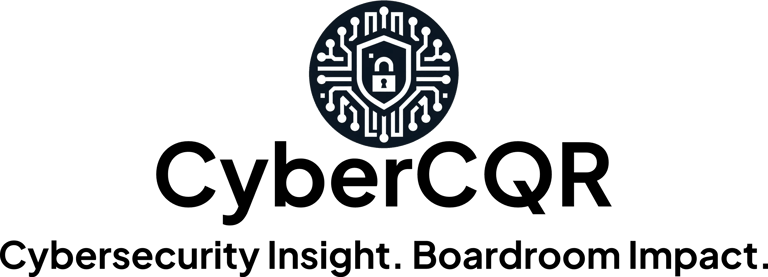Understanding Zero Trust: History, Evolution, and Controversies
In the constantly shifting landscape of cybersecurity, Zero Trust has emerged as one of the most influential—and debated—strategies for modern organisations. As traditional network perimeters erode and cyber threats become more sophisticated, Zero Trust offers a new security paradigm designed for today’s distributed, cloud-centric world. But while the concept is gaining traction, it’s not without controversy.
1/13/20254 min read


Understanding Zero Trust: History, Evolution, and Controversies
In the constantly shifting landscape of cybersecurity, Zero Trust has emerged as one of the most influential—and debated—strategies for modern organisations. As traditional network perimeters erode and cyber threats become more sophisticated, Zero Trust offers a new security paradigm designed for today’s distributed, cloud-centric world. But while the concept is gaining traction, it’s not without controversy.
This in-depth guide explores the history, evolution, and ongoing debates surrounding Zero Trust security. We’ll look at what Zero Trust is, where it came from, why it matters, and why some critics believe it’s overhyped.
What is Zero Trust?
At its core, Zero Trust is a security model based on a simple principle: “Never trust, always verify.”
It assumes that threats exist both outside and inside the network, so no user, device, or system should be trusted automatically. Every access request must be continuously authenticated, authorized, and validated.
“Zero Trust is not a single product or technology—it’s a comprehensive strategy.”
— John Kindervag, Creator of Zero Trust
The Key Principles of Zero Trust:
1. Verify explicitly: Always authenticate and authorise access based on available data (user identity, device health, location, etc.).
2. Use least privilege access: Limit access permissions to the minimum required.
3. Assume breach: Design systems as if attackers are already inside the environment.
✔ Microsoft Zero Trust Guidance
🔗 Zero Trust Principles - Microsoft
A Brief History of Zero Trust
Origins: John Kindervag and Forrester (2010)
The concept of Zero Trust was formally introduced by John Kindervag, then a principal analyst at Forrester Research, in 2010. Kindervag argued that traditional security models based on a trusted internal network and an untrusted external network (the “castle-and-moat” model) were fundamentally flawed.
✔ Forrester Zero Trust Paper (2010)
Why the Traditional Model Failed
• Flat networks allowed attackers to move laterally once inside.
• Perimeter-based defences assumed users and devices inside the network were trustworthy.
• Growing mobility, cloud adoption, and remote work blurred network boundaries.
Early Industry Adoption
Google became one of the first major companies to implement a Zero Trust model internally through its BeyondCorp initiative after suffering a sophisticated attack in 2009 (Operation Aurora).
✔ Google BeyondCorp White Paper
The Evolution of Zero Trust
From Theory to Industry Standard
As cloud computing, SaaS, and remote workforces became the norm, Zero Trust evolved from a theoretical model to a widely adopted security architecture.
CISA Zero Trust Maturity Model (2021)
The U.S. Cybersecurity and Infrastructure Security Agency (CISA) released its Zero Trust Maturity Model to guide organisations through their Zero Trust journey.
✔ CISA Zero Trust Maturity Model v2
NIST Special Publication 800-207 (2020)
The National Institute of Standards and Technology (NIST) published SP 800-207, formalising guidance on Zero Trust architectures.
✔ NIST SP 800-207
🔗 NIST Zero Trust Architecture
Technology Advancements Driving Zero Trust
1. Cloud computing and SaaS
2. Remote workforce and BYOD
3. Identity and Access Management (IAM)
4. Multi-Factor Authentication (MFA)
5. Micro-segmentation
6. Continuous monitoring and analytics
Controversies and Criticisms of Zero Trust
While Zero Trust has been praised for addressing modern security challenges, it has also sparked debate. Let’s explore the criticisms, misunderstandings, and pitfalls.
1. Zero Trust is Not a Product (But It’s Often Marketed That Way)
Vendors frequently overuse and misuse the term “Zero Trust” to sell products, from firewalls to endpoint security tools. This can lead organisations to mistakenly believe that purchasing a single product equates to implementing Zero Trust.
“You can’t buy Zero Trust in a box.”
— John Kindervag
✔ Gartner Market Guide: Zero Trust Network Access
2. Complexity and Implementation Challenges
Transitioning to Zero Trust requires redesigning network architecture, implementing robust IAM, and deploying continuous monitoring.
Organisations may face:
• Legacy systems compatibility issues
• Skill shortages
• Budget constraints
• Cultural resistance
✔ Forrester’s “The Top Five Zero Trust Truths”
3. Performance and User Experience Concerns
Continuous authentication and segmentation can introduce latency and affect user experience if not implemented carefully.
4. Overhyping “Trustlessness”
Some critics argue that Zero Trust can create a false sense of security. Even in Zero Trust, trust still exists—but it’s dynamic, context-aware, and continuously evaluated.
Zero Trust in Action: Real-World Examples
Google BeyondCorp
Google’s BeyondCorp is perhaps the most cited Zero Trust example. It enables employees to work securely from untrusted networks without VPNs.
U.S. Federal Government Executive Order (2021)
Following a series of high-profile cyber incidents (SolarWinds, Colonial Pipeline), President Biden signed an executive order mandating federal agencies to adopt Zero Trust architectures.
✔ Executive Order on Improving the Nation’s Cybersecurity
Financial Services Industry
Banks and financial institutions are moving to Zero Trust to secure customer data, enhance fraud detection, and meet compliance mandates.
✔ IBM’s Zero Trust Security for Financial Services
Methodologies for Implementing Zero Trust
1. Identity-Centric Security
Strong Identity and Access Management (IAM), including:
• Multi-factor authentication (MFA)
• Privileged Access Management (PAM)
• Role-Based Access Control (RBAC)
2. Micro-Segmentation
Dividing networks into smaller zones to limit lateral movement.
✔ VMware NSX Micro-segmentation
3. Continuous Monitoring and Analytics
Using Security Information and Event Management (SIEM), User and Entity Behavior Analytics (UEBA), and Security Orchestration Automation and Response (SOAR).
4. Device Trust and Endpoint Detection and Response (EDR)
Ensuring device posture is secure and monitored continuously.
The Future of Zero Trust
As organisations increasingly embrace hybrid work, cloud-native applications, and IoT, Zero Trust is expected to evolve further. Emerging trends include:
• AI-driven adaptive authentication
• Zero Trust for OT (Operational Technology)
• Identity of Things (IDoT) management
• Zero Trust Edge (ZTE) and SASE (Secure Access Service Edge)
✔ Gartner’s Hype Cycle for Zero Trust Security 2023
Conclusion: Zero Trust—Hype, Hope, or Reality?
Zero Trust is not a silver bullet, but it represents a necessary shift in cybersecurity thinking for an increasingly complex digital world. While its implementation is challenging and sometimes overhyped, its principles remain sound:
• Minimise implicit trust
• Continuously verify everything
• Limit damage in the event of a breach
Organisations that approach Zero Trust strategically, rather than tactically or reactively, are better positioned to protect their digital assets and maintain resilience.
Further Reading and Resources
📄 NIST Special Publication 800-207
📄 CISA Zero Trust Maturity Model v2
📄 Forrester’s Zero Trust eXtended Ecosystem (ZTX)
📄 World Economic Forum: Cybersecurity and Resilience Frameworks
Want help implementing Zero Trust in your organisation?
Contact our cybersecurity experts today!
Security
Empowering organizations against cyber threats effectively.
© 2025. All rights reserved.
